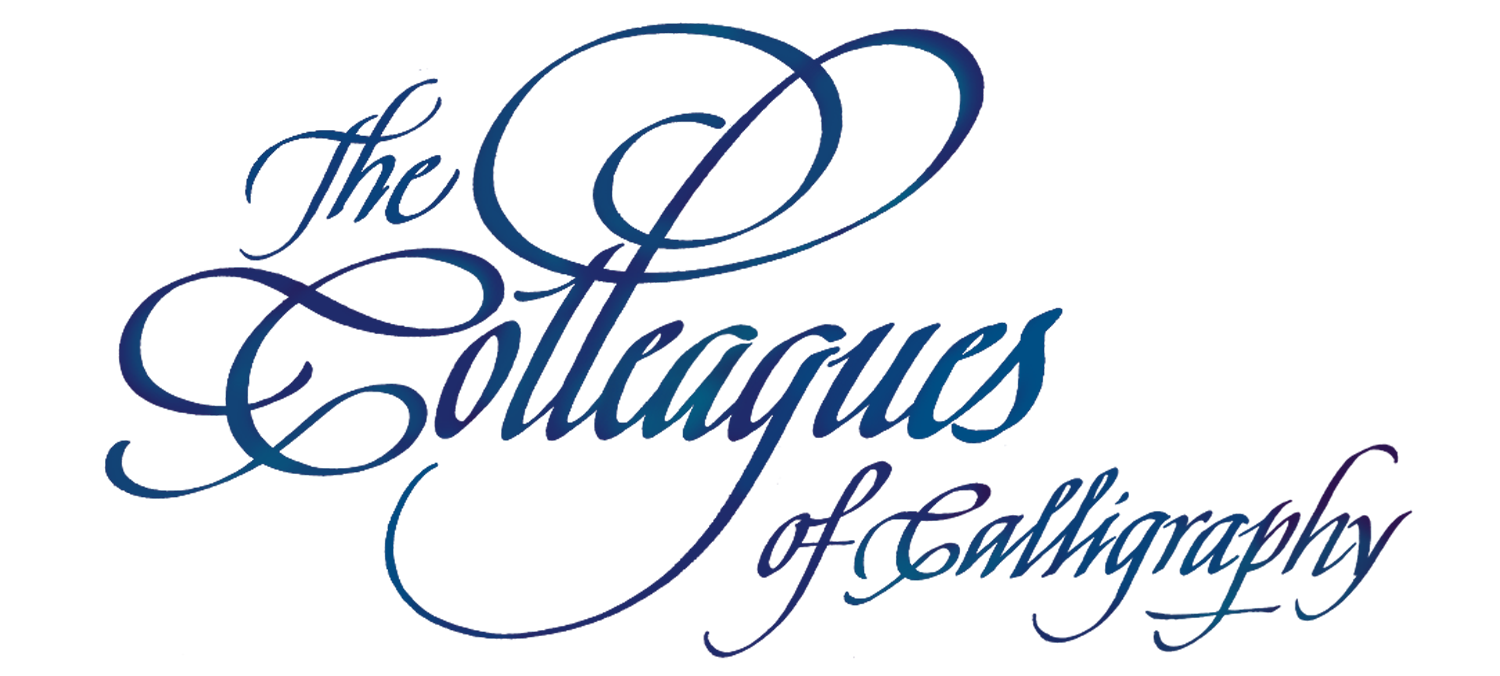Calligraphic Typefaces You Can Eat with Pen or Brush
“You had to be there” would be a lazy but accurate phrase to describe the mind- and creativity- expanding experience of our April Zoom workshop, “Calligraphic Typefaces You Can Eat with Pen or Brush” with the inimitable Carl Rohrs. Can one be overserved on aesthetic inspiration? I think not, and know only that my head and heart were filled with a sense of electric creativity at the end of both days.
When I opened the pdf of the 150+ page resource book that was our textbook for two Saturdays, I gasped, “Oh my God! WOW!” Instantly I knew we would feast on a body of learning guided by Carl’s masterful, creative, encyclopedic gifts of knowledge, insight, talent, and experience. We would explore the interplay between calligraphic typefaces and calligraphy. He did not disappoint. Throughout the workshop, Carl helped to develop our skills of both eye and hand.
Using countless examples from our ‘textbook’ to teach us to look and see through a different lens, Carl walked us through differences between calligraphic styles and typefaces derived from those hands. In a sense, we were learning how to reverse engineer the components of letters in a typeface to infer the calligraphic influences on it (a bit like using Edward Johnston's method of analyzing a hand or manuscript). Or we would look at the calligraphy of a typeface’s creator to excavate its influences found in the typeface. In addition to examining works of some of the more commonly known greats such as Rudolf Koch or Hermann Zapf, Carl gave airtime to many other gifted artists, such as Gudrun Zapf von Hesse, Oldrich Menhart, Alfred Linz, George Trump, Hildegard Korger, Ernst Schneidler, to name a few.
To develop our physical skill, the brush would wait until week two. First, we worked with thebroad-edge pen, a 5/16 in Horizon Flat pen, or a #4 Automatic, or similar Coit or Hero). Watching, then following Carl’s example, was the best way to experience the subtle differences created using various angles; turns; lifts; flicks; bounces; leading edge or trailing edge drawn lines; or rocking corners of the pen for upstrokes and downstrokes (Sally, insert this image near this part of the text?)
Our assignment for day 1 was to interpret a typeface in a modest piece, and or take a characteristic of 2 typefaces and put it into 1 style. Simply selecting from the buffet of options in our sourcebook was difficult. A benefit of a workshop via Zoom spread out over two weeks, however, was that the time allowed for less hurried study and opportunity to ‘try on’ a couple of options for experimentation. Here are a couple of examples of what were produced (Sally, I assume you have those screenshots).
We started the second session with Carl showing examples of what people submitted and we discussed what worked and the challenges we experienced. We then picked up a brush. First was the
1/2 in Flat (WN, Raphael Kaerell). Compared to using a solid, broad-edged tool inked with a flowing medium, lettering with a “dry”-ish gouached flat brush is super revealing of individual strokes and strokes sequences.. Adapting the strokes to achieve tasteful terminals or downstrokes requires subtle thoughtfulness and care in execution.
For the pointed brush (a Pentel Color Brush, or Pentel waterbrush), Carl reinforced that “the pen pushes, the brush cannot.” This underpinned how one sees the differences between perpendicular or parallel strokes, and setting your intention for a stroke’s pressure when starting it vs during it. Balanced and aesthetically pleasing letters come with practice and reaching the point unthinking the process to deliver an unhesitating, flowing composition.
We were Carl’s first Zoom workshop, and I think he prefers the live classroom (so do I), but on the other side of the camera I gained so much that I’d have felt I missed a great opportunity to learn from such a master had I passed on it solely because it was done remotely. And in either setting, Carl Rohrs is a treasure to experience. Thank you for your time with us, Carl!
The images below are from Carl’s presentation the evening before the workshop. Carl has traveled the world for many years in search of work from type designers, calligraphers, sign-painters and other lettering artists who’s work has inspired him. He has accessed archives all over the world. One thing that stands out is his love of the seemingly most minor detail of a letter - especially in the pre-work/design of a type-face that never made it to the final design. It is evident that he is always trying to get into the creative head of the artists that continue to inspire him.



